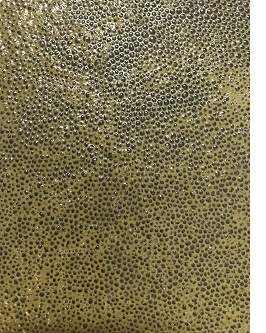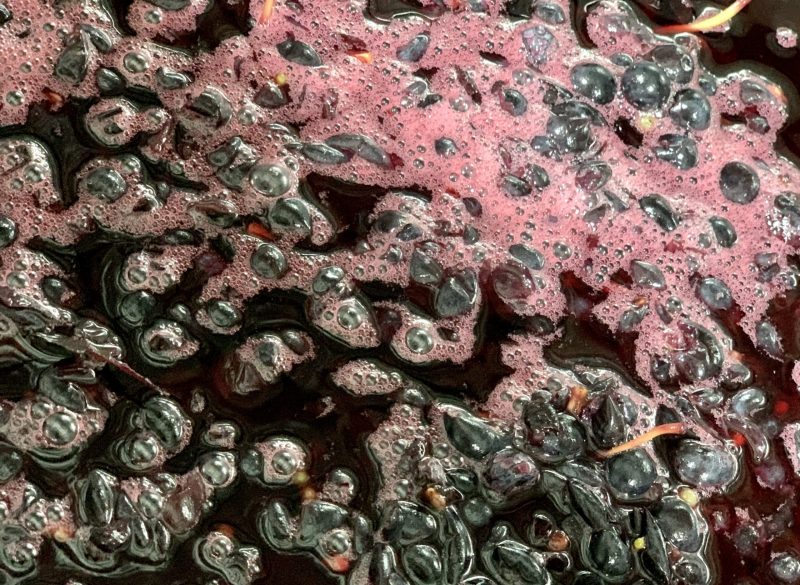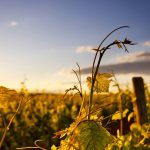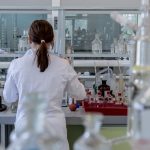Using indigenous yeast from a winemaker’s perspective
No matter what your winemaking style, the wine region you are from, the grape variety you are working with, how many trophies you have won or what football team you barrack for – one thing stays reliably constant in winemaking: the sugars (carbohydrates) in grapes are turned into alcohol and carbon dioxide by tiny legends called yeast. This is the glory of fermentation.
Corrina Wright, director and winemaker at Oliver’s Taranga in McLaren Vale, analyses the potential of natural yeasts during fermentation, and explores the pros and cons of their use in the winery.
These critters are so ubiquitous, they would eat the sugars in the grapes (or anything else with carbohydrates) whether a very learned winemaker is there to watch it happen or not. Louis Pasteur may have proven the existence of yeasts and their role in fermentation in 1863, but they had been going on their merry way unassisted by the human hand for millennia prior to that.
With that in mind, I wanted to do a bit of a deep dive into the strengths, weaknesses, opportunities, and threats (SWOT) of the use of wild yeast in winemaking today. Having worked on either side of the winemaking divide in large commercial and small batch premium production, I have used natural yeasts with success in both camps so much so that it has become my go to.
Firstly, the definitions. I am defining natural yeasts as any that hitches a ride in on the fruit from the vineyard, any that clings to vineyard and winery surfaces and those that float around us in the air. Other words commonly used for them are indigenous, natural, ambient, native or wild. Natural yeast will begin the fermentation process spontaneously. These ferments also have zero or very low additions of sulfur to the grapes or juice or must prior to a spontaneous fermentation. The addition of sulfur will inhibit the growth of many native yeasts.5
Studies have shown that the species and genera makeup of yeast microflora are completely local to each vineyard and vary significantly between seasons.2 While the reasons are not fully understood, scientists posture that everything from region, variety, age of vines, vineyard practices, soil type, the native environment surrounding the vineyard, and the climatic conditions of the season all impact the native yeast populations.1,2 Yeasts with the ability to ferment grape juice from the Hanseniaspora, Candida, Pichia, Kloeckera, Metschnikowia, Brettanomyces as well as other Saccharomyces species have been isolated from vineyards; “Spontaneously fermenting grape musts constitute rich microbial ecosystems, harbouring a remarkable diversity of yeast species.”3
Each of these may only carry out a small section of fermentation, with wild ferments being characterised by the sequential development of numerous populations of different species, depending upon the prevailing conditions of the ferment at the particular point in time – mainly the alcohol level and temperature. I like to think of it as an orchestral piece, where the strings may start proceedings, building to some wind instruments, and then the drums coming in at the crescendo.
I often hear comments that, even if left to its own devices, the fermentation will not be carried out by the native yeasts transported on the grapes, but rather the Saccharomyces cerevisiae that hangs around in the winery. The underlying argument being that ‘natural’ yeast is just a hippy term to make everyone feel nice, but that it doesn’t really mean anything. This has been proven not to be the case. The recognised pattern of development of yeast through a wild ferment is “…non-Saccharomyces being the most common at initial stages and Saccharomyces cerevisiae the dominant species at the final stages of fermentation.”4 Further, the Saccharomyces cerevisiae strain that the winery may have been inoculating other ferments with is often not the same one that finishes an un-inoculated ferment.7
An inoculated ferment is one where a freeze-dried or live yeast culture is introduced to the juice or grape must to kick things off. It’s 99% of the time that the introduced yeast is a strain of the proven alcohol-tolerant Saccharomyces cerevisiae. Over the centuries, it has been synonymous with wine production and is known “for its complete and efficient conversion of grape sugars to ethanol, carbon dioxide, and other minor, but important, metabolites without the development of off-flavours.”5 This yeast species is rarely found on the fruit or in vineyards, thought to be due to a sensitivity to sunlight, but is found in abundance on winery surfaces.6
Strengths of wild fermentation
Number one on the list of strengths must be the increase in complexity and integration in the resultant wines from wild fermentation. This has been noted both anecdotally in practice as well as in too many scientific articles to mention here.7,8,5,4,3
 |
The main reason postulated for this is that the little orchestra of numerous yeast populations that continually take over from each other as the ferment progresses each metabolise grape sugars in their own individual chemical pathway, releasing different metabolites along the way. “Yeast-derived volatile fermentation products are a key difference between inoculated and un-inoculated ferments and provides a chemical basis for the ‘wild’ yeast fermentation character.”7
This can also have an impact on the texture of the wine. “A consequence of the higher concentrations of glycerol and other polyols produced by indigenous yeasts.”5 There is a reason why yeast companies and researchers are working hard on isolating and developing wild yeast strains for winemakers to use in their fermentation arsenal, they are looking to get the complexity of a wild yeast ferment coupled with the predictability of an inoculated one. |
In my experience, I have found this complexing factor to be as useful to large production commercial wine as in my small batch single vineyard wines. By having a proportion of wild yeast ferment to go into the final blend of a commercial Chardonnay, a textural and complexing component was added to the wine that numerous different inoculated yeast strains did not provide on their own. Nothing like gaining my confidence in wild yeast while looking after a myriad of 300kL D-grade Chardonnay ferments!
Another strength is the ability of a wild ferment to provide the winemaker and consumer with a truly terroir driven wine, representative of the particular vineyard and season right down to the microbial makeup of the ferment. In an age of over 2,700 Australian wine brands, perhaps this is one way to stand out.
One of the least mentioned strengths of using natural yeast, in any of the literature, is a reduction in cost. I can hear all the yeast companies screaming at me, but it is a realistic consideration for business owners. Indigenous yeast is free.
Weaknesses of wild fermentation
The main weakness of a wild ferment is the extended lag phase before fermentation starts, and the generally slower fermentation kinetics in general, particularly towards the end of fermentation.
This creates a nervousness around oxidation and ‘stuck’ fermentation risk, as well as its potential impact on winery logistics and throughput. If you have pressure on every tank and fermenter to get the wines through ferment quickly so that the next ferment can begin, perhaps this pathway is not for you.
Added to this is the increased variability of the ferment between seasons, vineyards and batches. The results are not always as predictable as an inoculated ferment, though I would argue when are ferments ever completely certain? Control freaks should not apply, neither should those who are looking to make very consistent wines across vintages.
There is the possibility of spoilage compounds being produced in a wild ferment. That said, one winemaker’s spoilage may be another winemaker’s complexity. Arguably, sound fruit free of an abnormal microbial load is key. Seasons full of heatwaves or particularly high-baume fruit sometimes make me think carefully about whether I will run wild or not. In my experience, the risk of stuck fermentations has been more related to the particular vintage conditions, rather than whether I have used a wild ferment or not.
Overall, there is a reason why Saccharomyces cerevisiae has risen to the top in winemaking – it is a fast and complete fermenter with a small lag-phase, usually linear, sulfur and ethanol tolerant, rarely produces off-characters. If your comfort for risk is low, inoculation may be your best option.
Opportunities for wild fermentation
Using yeasts that are endemic to your vineyard and season can help transmit a sense of place to a wine. This is an opportunity for marketers and winemakers to assist in telling the story of their individual wines and brands.
Consumers are interested in knowing more about where their foods and wines come from, tap into this. There is also an increased interest from consumers in knowing what has been ‘added’ to wines and the rise of the ‘natural’ wine movement in general.
Having more blending parcels available always appeals to me. There are many opportunities to dip your toe into ‘wild-ish fermentation’ without going the full hog. This includes letting fermentation start spontaneously, and then inoculating with a trusted Saccharomyces part way through fermentation.
Evidence suggests that by 6% alcohol content, most of the other species have already done their best and the yeast population in charge is likely to be Saccharomyces cerevisiae. You could also inoculate with some of the many non-Saccharomyces strains that are on the market now in both individual strains and as co-inoculates with Saccharomyces cerevisiae.
Favourites of mine include Saccharomyces uvarum (the renamed old Bayanus sp.), Hanseniaspora uvarum, Torulaspora delbrueckii, and Kluyveromyces thermotolerans. While I don’t find these to have all the complexing factors that a wild ferment does, they often add considerable level of interest for particular parcels. The possibilities are endless.
Threats of wild fermentation
The main threat is that you end up with a wine that you don’t like for reason of style or spoilage or just personal preference and you have to absorb the cost of the fruit and lose the potential margins on sale of the resultant wine. That is not ideal, and anything that has risks to your brand or financial sustainability of your business needs to be looked at carefully.
However, I would argue that any ferment, whether it be wild or inoculated, needs to have the keen eye of a winemaker overseeing it. At the risk of sounding like I am trying to justify my job, all ferments may need a little coaxing or small interventions (temperature, pump overs, oak use, oxygen, etc.) in order for it to go in the direction that you want. Wild ferments don’t mean you get to go on holiday during vintage; if they do start to go awry, as with inoculated ferments, you have many tools in your arsenal to get things back on track.
I shall leave the final word to wine writer Jamie Goode, who said, “I’m glad that wild fermentations are more common these days, and that there is a link between the organisms that carry out these fermentations and the vineyard”.
“But I’m also grateful for the sophisticated microbiological work carried out by yeast researchers, resulting in interesting products, such as specialty yeast strains and even cultured non-Saccharomyces yeasts for those who want wild ferment character without the risk.
“Both are necessary, and in the right hands can help make more interesting wines. In this sort of fight, we all win.”9
References
- Francesca, N., Chiurazzi, M., Romano, R., Aponte, M., Settanni, L., Moschetti, G. (2010) Indigenous yeast communities in the environment of “Rovello bianco” grape variety and their use in commercial white wine fermentation’ World of Microbiology and Biotechnology 26: 337-351
- Stefanini, I. & Cavalieri, D. (2018) ‘Metagenomic approaches to investigate the contribution of the vineyard environment to the quality of wine fermentation: potentials and difficulties’ Frontiers in Microbiology 9: Article 991
- Eder, M.L.R., Conti, F., Rosa, A.L. (2018) ‘Differences Between Indigenous Yeast Populations in Spontaneously Fermenting Musts From V. vinifera L. and V. labrusca L. Grapes Harvested in the Same Geographic Location’ Frontiers in Microbiology 9: Article 1320
- Jolly, N.P., Varela, C., Pretorius, I.S. (2014) ‘Not your ordinary yeast: non-saccharomyces yeasts in wine production uncovered.’ FEMS Yeast Research, 14: 215-237
This article was originally published in the July issue of The Australian & New Zealand Grapegrower & Winemaker. To find out more about our monthly magazine, or to subscribe, click here!
To view the current issue of the Grapegrower & Winemaker, visit our Current Issue page.
Are you a Daily Wine News subscriber? If not, click here to join our mailing list. It’s free!





















